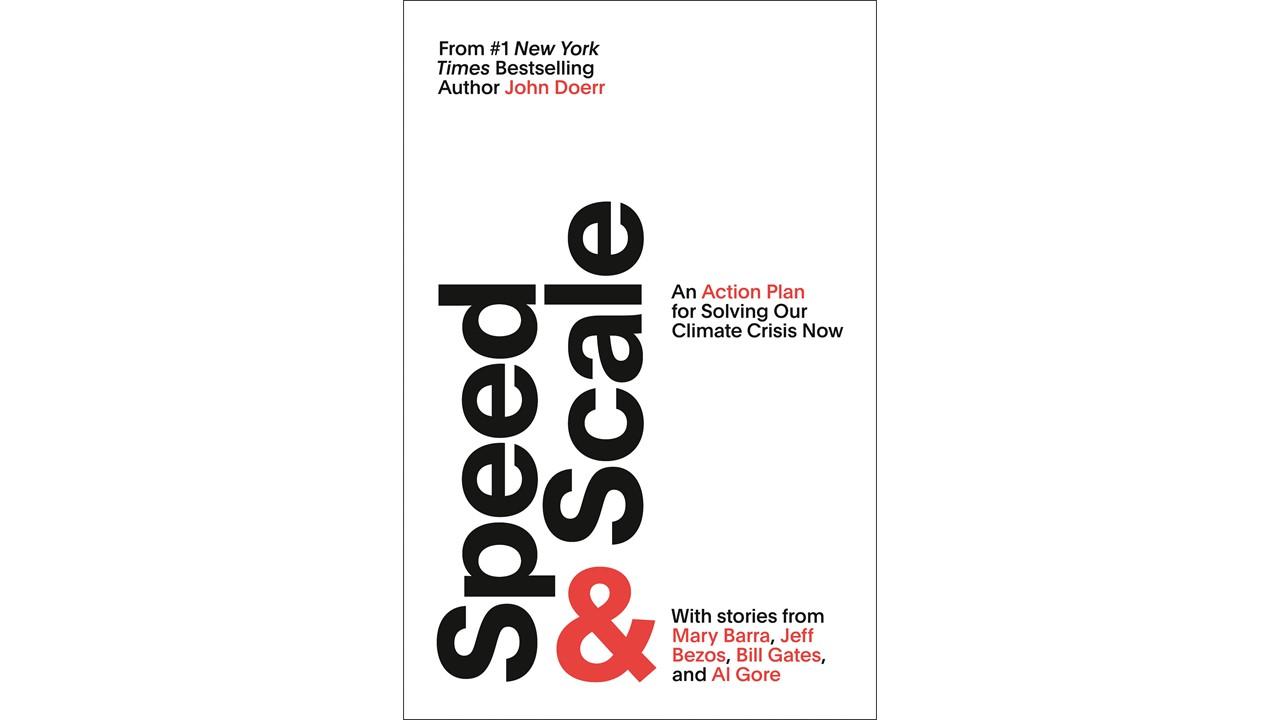We welcome your reviews of books that • were published within the past three years • do not advocate for a political party or politician • do address issues supported by the League, and • intrigued you enough that you want to share them. Please submit your review at any time to communications [at] lwv-pa.org ().
Speed & Scale
An Action Plan for Solving our Climate Crisis Now
By John Doerr

Members of the Natural Resources Committee have been recommending books to one another, focusing on those that lay out plans for reaching the ever-receding climate goal of “no more than 1.5 degrees Celsius beyond pre-industrial era levels by 2050.” Member Rody Stephenson has gone a step further: He outlines each book he reads and gives it his estimate of how helpful it may be in guiding society to reduce global warming. Recently he circulated summaries of three books: Bill Gates’s How to Avoid a Climate Disaster,Michael Mann’s The New Climate War (reviewed in the April 2021 Voter, p. 9), andJohn Doerr’s Speed & Scale. Peter Parker and I have read the books as well; we agree with Rody that Doerr’s Speed & Scale is the strongest.
Speed & Scale is laid out in an appealing way, the chapters alternating with graphs, drawings, and photographs. Major points persuading the reader that “Yes, we can do this!” jump out, easy to remember. In addition, Doerr’s book highlights important phrases and sentences, as though a college student has just outlined the text in preparation for an exam.
Doerr is CEO of Kleiner Perkins, one of the largest venture capital firms in the United States. He is a billionaire colleague of Bill Gates, Jeff Bezos, Al Gore, Mike Bloomberg, and others. He notes that we are currently emitting 59 gigatons (GTs) of CO2 per year, and that will increase to 72 GTs on our current course. In his prologue, Doerr proclaims, “I’m scared and I’m angry. . . . What we’re doing is not nearly enough.” He follows with an invitation: “Speed & Scale is written for the leader inside you.”
Doerr has a comprehensive plan to get to net zero gigatons by 2050. He divides CO2 emissions, and ways to eliminate them, into six major objectives:
- Electrify transportation
- Decarbonize the grid
- Fix food
- Protect nature
- Clean up industry
- Remove carbon (for residual emissions that can’t be driven to zero)
For each objective, Doerr lists measurable goals. He starts with an emphasis on electrification of transportation and decarbonization (electrification) of buildings— emphases similar to the NRC Committee’s “10 Actions,” which we are urging our thirteen LWV-PA cities to undertake.
Doerr gives kudos to General Motors CEO Mary Barra for news that surpasses Tesla’s. Chevrolet plans a new lineup of thirty EV models to be introduced by 2025. In addition, it has given a “sneak peek” at the Ultium, a high-energy, large format EV battery platform. In decarbonizing the grid, Doerr compliments Hermann Scheer of the German Bundestag (federal parliament), who founded the International Renewable Energy Agency and became president of Eurosolar, a coalition of energy entrepreneurs. What came to be known as Scheer’s law established the world’s first large, national marketplace for solar and wind power.
Doerr sets intermediate milestones between now and 2050. This is the “speed” part of it—to get the world moving faster to eliminate carbon emissions. But it is his emphasis on “scale” that poses the challenge. The task is enormous, and solutions need to be scalable, meaning rapidly expandable to larger and larger areas in order to remove more and more gigatons. He urges humanity to focus on measures that can remove one GT or more. We have no time to depend on incremental measures such as “hanging our washing on a clothesline.”
Doerr’s chapters on four “accelerants” are where the rubber skids rather than grabbing the pavement:
- Politics and policy
- Movements actually accomplishing their goals
- Innovation
- Investment
Trillions of dollars are needed while we continue to rely on gas-guzzling cars, indulge in steak dinners, and enjoy plane trips to distant vacation venues. As Bill Gates does in his book, Doerr recommends that the U.S. government increase its investment in “cleantech” R&D fivefold, to about $40 billion a year. Can we muster the political will? This is where grass-roots organizations like our League must play a key role.
We can start by disseminating these ideas. Doerr’s book should be at the top of our lists as birthday gifts to family and friends. We also recommend reading about how to avoid climate catastrophe with the book Drawdown: The Most Comprehensive Plan Ever Proposed to Reverse Global Warming, edited by Paul Hawken.
—Julie Parker, Rody Stephenson, and Peter Parker, Natural Resources Committee